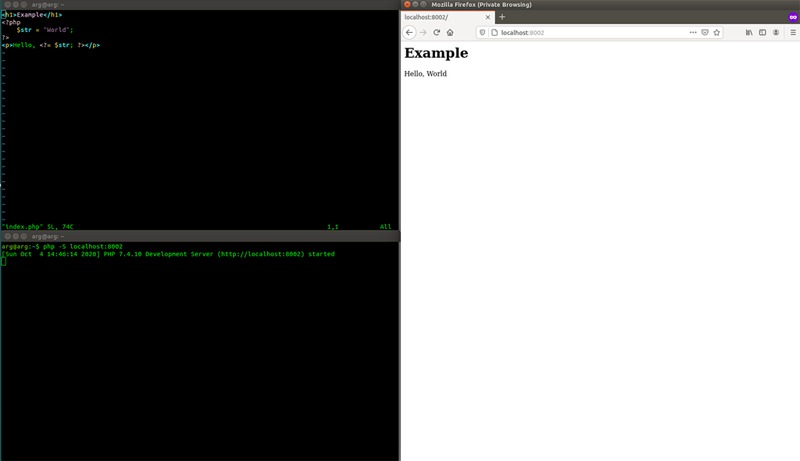One of the first things you will notice about PHP is its acronym. “PHP” actually stands for “Hypertext Preprocessor.” This type of acronym is called “recursive initialism.” But apart from its rather confounding initials, it’s otherwise one of the relatively easier languages to master.
PHP is a widely-used open source and general-purpose scripting language that is particularly suited for developing websites. It derives thousands of today’s several web applications, such as Facebook, Wikipedia, WordPress, Digg, and Drupal. The great thing about PHP is that it allows you to create dynamic web pages and can also be embedded into HTML.PHP has rather humble beginnings, but its development has grown to become a web development standard since its development. It was first conceived in 1994, but the PHP that people use today is entirely different from the initial version. To understand where and how PHP got where it is today, it helps know its history and evolution.
PHP/FI
PHP is believed to originally mean “Personal Home Page.” It was first conceived by programmer Rasmus Lerdorf in 1994 when he first wrote several Common Gateway Interface (CGI) programs in C, which he used to maintain his personal homepage and track views on his online resume. Lerdorf expanded them to work with HTML forms (web forms) to communicate with databases and referred to this implementation as “Personal Home Page/Forms Interpreter” or PHP/FI.
Lerdorf released the source code of PHP/FI to the public to generate comments, make bug fixes, and other improvements. At this stage, PHP/FI was much similar to Perl.
PHP/FI 2
Lerdorf had no intention of making the initial PHP to be a new programming language, which grew organically. A development team formed and officially released PHP/FI 2 (or PHP/FI 2.0) in the fall of 1997. When it was released, it began taking resemblance of the PHP that we know today. Following its release, PHP/FI 2 quickly earned a cult following and was installed on around 50,000 domains. A Netcraft survey revealed that, as of May 1998, almost 60,000 domains reported having headers containing “PHP”, implying that the host server did have it installed indeed. These figures equated to roughly 1% of all domains on the Internet during that time.
PHP 3
PHP 3 included a significant overhaul of the initial version, with emphasis on extensibility. PHP/FI 2 was too under-equipped for specific applications (such as eCommerce storefronts). Lerdorf began collaborating with developers Andi Gutmans and Zeev Suraski to rewrite PHP 3. Aside from the two main developers, Lerdorf also invited the wider community to add extension modules to the pre-existing protocols, databases, API’s, and infrastructure. It also included an object-oriented syntax. After nine months of public beta testing, PHP 3 was officially released in June 1998. It also adopted the recursive initials “PHP” for “PHP Hypertext Processor” – an acronym which became a butt of jokes among developers.
PHP 4
Gutman and Suraski rewrote PHP into PHP 4 in order to improve its overall performance, allowing it to run more complex web applications. It would enhance PHP’s modularity and enable greater use by third-party API’s. The new engine was called the “Zend Engine” (a combination of Suraski’s and Gutman’s first names), which supports more servers, output buffering, HTTP sessions, better security for the users. PHP 4 was officially released in May 2000 and was used by around 20% of the domains on the Internet.
PHP 5
PHP 5 is based on the update of the Zend Engine, the Zend Engine 2.0. With this engine, PHP 5 had a new model and improved functionality for SQL and XML, among other brand-new features. It was officially released in July 2004.
PHP 6 and Unicode
At that time, PHP lacked native Unicode support. It led to a project that was supposed to feature native Unicode support, but it was later abandoned. When PHP 6 was still under development, the UTF-8 was not yet widely adopted. Because of this, the project was eventually stopped in favor of PHP 7.
PHP 7
PHP 7 came with new features, such as scalar type declarations, return type declarations, null coalescing operator, and “spaceship” three-way comparison operator. PHP 7 offers impressive performance and improved handling errors with scalar type declarations, return type declarations, and many other syntax modifications.
PHP 8
The latest version, PHP 8, was released in November 2020. It is a major version which has new features and significant changes compared to its predecessors. They include just-in-time compilation, nullsafe operator, constructor property promotion, the addition of the match expression, several type changes and additions as well as syntax changes and additions, among others. You can go to the PHP 8’s announcement page – www.php.net

